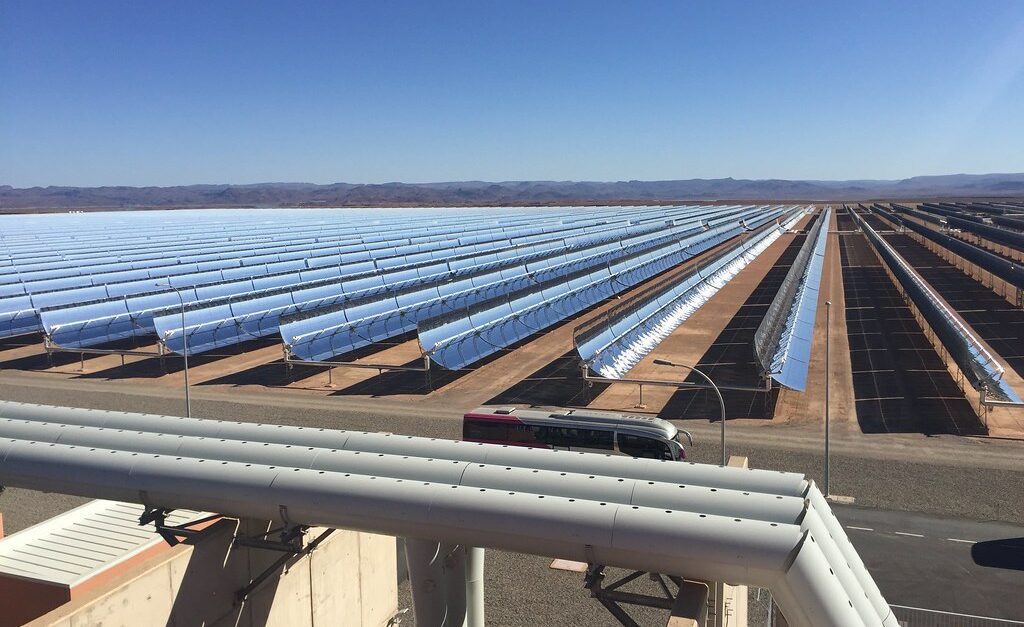Will Morocco electrify Europe?

The richest man in Asia plans to invest in a maxi-project in Morocco for the production of green electricity and hydrogen, to be exported to Europe. The potential of North Africa is also examined by Enel, Eni and Snam. All the details
Gautam Adani, president of the Indian energy-logistics conglomerate Adani Group and the richest man in Asia, is considering an investment in a major renewable energy project in Morocco that will provide Europe with zero-emission electricity and fuel.
While continuing to invest significant amounts in fossil fuels, the Adani Group has set itself the goal of becoming the largest producer of clean energy by the end of the decade.
WHAT THE PROJECT CONSISTS OF
Adani's idea is to build wind and photovoltaic plants in Morocco for the generation of clean electricity. These plants, thanks to the country's high wind and solar radiation potential, should allow for the production of large quantities of electricity, which can be partly used for the production of green hydrogen.
Hydrogen is a fuel that does not release greenhouse gases and that can allow the decarbonization of heavy industries and transport that are impossible to power with electricity, replacing coal and fossil gas.
– Read also: Hydrogen, which Italian companies are involved in the new EU project
10 GW OF CAPACITY
According to sources from Bloomberg , who broke the news, the project will have a capacity of 10 gigawatts (GW). This is roughly equal to the current total installed energy capacity in Morocco: wind and solar power currently amounts to approximately 2.8 GW.
INTERNAL CONSUMPTION AND EXPORT
The project will develop, it seems, in two phases, each of 5 GW. The electricity and hydrogen produced by the plants will be destined for both internal consumption and export. Adani has entered into negotiations with Office chérifien des phosphates (OCP), a Moroccan state-owned fertilizer company, to supply it with green hydrogen to be used to produce zero-emission ammonia.
HOW DO ADANI'S ACTIONS GO
Shares in Adani Green, a division of the namesake group dedicated to renewables, closed last week with a 3.6 percent increase, the largest in two months.
TIMES
Adani's project is still in a very preliminary phase: only exploratory talks have been started to evaluate its costs and benefits. Furthermore, the eventual export of green hydrogen to Europe could take several years to begin: the technologies for producing fuel from renewable electricity are not yet commercially mature. A project in Arabia to produce 4 GW of green hydrogen will take four years to complete.
INTEREST IN NORTH AFRICA
The North African and Gulf countries are considered potential poles (or hubs ) for the export of green hydrogen: in addition to being able to count on excellent wind and solar exposure, they are also geographically close to the European market, where fuel consumption should grow a lot. in the coming decades.
– Read also: BarMar, what we know about the hydrogen pipeline between France, Spain and Portugal
In July, another Indian company, ReNew Energy Global, signed an initial agreement to build an $ 8 billion green hydrogen project in Egypt.
ENEL AND ENI, MEANWHILE …
In January last year, the Moroccan authorities authorized the construction of the Jbel Lahdid wind farm, near the port of Essaouira, with 270 megawatts of capacity: the project is being carried out by a consortium formed by Enel Green Power and the Moroccan energy company Nareva.
Last year Stefano Mantellassi, head of Eni's Energy Solutions (Southern Europe) division, explained that the company is operating, developing and expanding renewable energy projects in Algeria, Tunisia, Egypt and Morocco.
SNAM ALSO LOOKS TO NORTH AFRICA
According to Snam, the company that manages the Italian gas pipeline network, Italy could import hydrogen from North Africa at a price 14 percent lower than that of domestic production, exploiting the existing pipelines between North Africa and Sicily. From southern Italy, then, hydrogen would be transported to the north, where energy demand is higher due to the greater presence of industries, and to the rest of Europe.
The transition to low-emission sources could therefore make Mediterranean Europe, including Italy, a green electricity and hydrogen distribution center between North Africa (production center) and Northern Europe (place of consumption).
This is a machine translation from Italian language of a post published on Start Magazine at the URL https://www.startmag.it/energia/marocco-elettricita-idrogeno-adani-snam/ on Tue, 25 Oct 2022 05:10:03 +0000.
